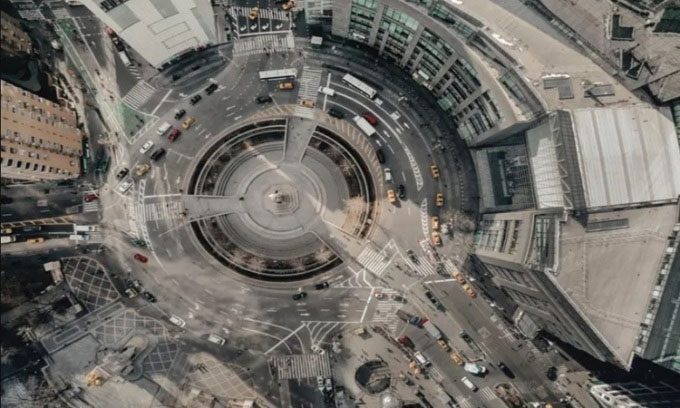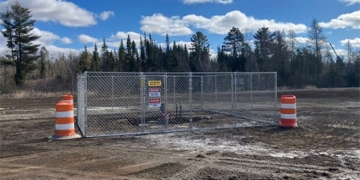Roundabouts are increasingly being built in the U.S. due to their ability to reduce traffic congestion and vehicle collision accidents.
Although a relatively new traffic management measure, roundabouts are becoming more popular across the United States, according to Business Insider. A roundabout, also known as a traffic circle or rotary, is a circular intersection designed to improve vehicle flow and safety. They offer several advantages over traditional intersections regulated by traffic lights or stop signs. Deogratias Eustace, a professor of mechanical, environmental, and civil engineering at the University of Dayton, has conducted research assessing the safety and operational effectiveness of roundabout installations at intersections. He also compared the performance of roundabouts to intersections regulated by stop signs.

The East Coast of the U.S. has more roundabouts than the West Coast. (Photo: Orbon Alija).
In the early 18th century, some urban planners proposed and even constructed circles at intersections, such as Circus in Bath, England, and Place Charles de Gaulle in France. In the U.S., engineer Pierre L’Enfant designed several circles for Washington, D.C. These circles were precursors to modern roundabouts.
In 1903, influential French architect and urban planner Eugène Hénard was among the first to introduce the idea of circular traffic flow to manage congested intersections in Paris. Around the same time, American businessman William Phelps Eno, the father of traffic safety regulation, also proposed using roundabouts to alleviate congestion in New York City. In the years that followed, a few other cities experimented with roundabout-like designs with varying degrees of success. These early roundabouts lacked any standard design guidelines and were often too large to be effective, as vehicles entered them at higher speeds.
The modern roundabout emerged with the introduction of yielding regulations in some cities in the U.K. during the 1950s. With the yielding rule, vehicles entering the roundabout must yield to those already circulating within it. This regulation was adopted nationally in the U.K. in 1966 and in France in 1983.
Yielding at the entrance of the roundabout means vehicles traverse modern roundabouts at slower speeds. Over the years, engineers have added various layouts that give roundabouts their current appearance. Some have incorporated crosswalks for pedestrians and traffic islands to help regulate vehicle speed. Engineers, urban planners, and lawmakers worldwide have observed that roundabouts improve traffic flow, reduce congestion, and enhance safety at intersections. Roundabouts then spread throughout Europe and Australia.
Three decades later, modern roundabouts appeared in North America. The first modern roundabout in the U.S. was built in Summerlin, west of Las Vegas, in 1990. Since then, the construction of roundabouts has become increasingly common in the country. Today, there are approximately 10,000 roundabouts across the United States.
The rapid growth of roundabouts is due to their ability to reduce potential conflict points. A conflict point at an intersection is a location where the paths of two or more vehicles intersect or have the potential to cross. The more conflict points there are, the more likely vehicles are to collide. Roundabouts have only 8 potential conflict points compared to 32 at a typical four-lane intersection. In a roundabout, vehicles do not cross paths at right angles.
The narrow circle of the roundabout forces approaching vehicles to slow down and yield to those inside, allowing for smooth navigation around the central island. As a result, roundabouts experience fewer stop-and-go issues, helping to reduce fuel consumption, vehicle emissions, and allowing drivers to make U-turns more easily. Due to the continuous flow of traffic at lower speeds in roundabouts, this minimizes the need for vehicles to stop, thereby alleviating congestion. The Federal Highway Administration estimates that when roundabouts replace signal-controlled intersections, fatal or serious injury accidents decrease by 90%. When roundabouts replace intersections using traffic lights, serious accidents drop by nearly 80%.
Engineers and planners typically build roundabouts at intersections with severe congestion or a history of accidents. However, with community support and funding, roundabouts can be installed anywhere. In areas without congestion problems, city planners often do not advocate for roundabouts. For example, there are about 750 roundabouts in Florida, but fewer than 50 combined in North Dakota, South Dakota, and Wyoming. In 2000, there were only 356 roundabouts in the U.S. Over two decades, that number has increased to over 10,000.




















































